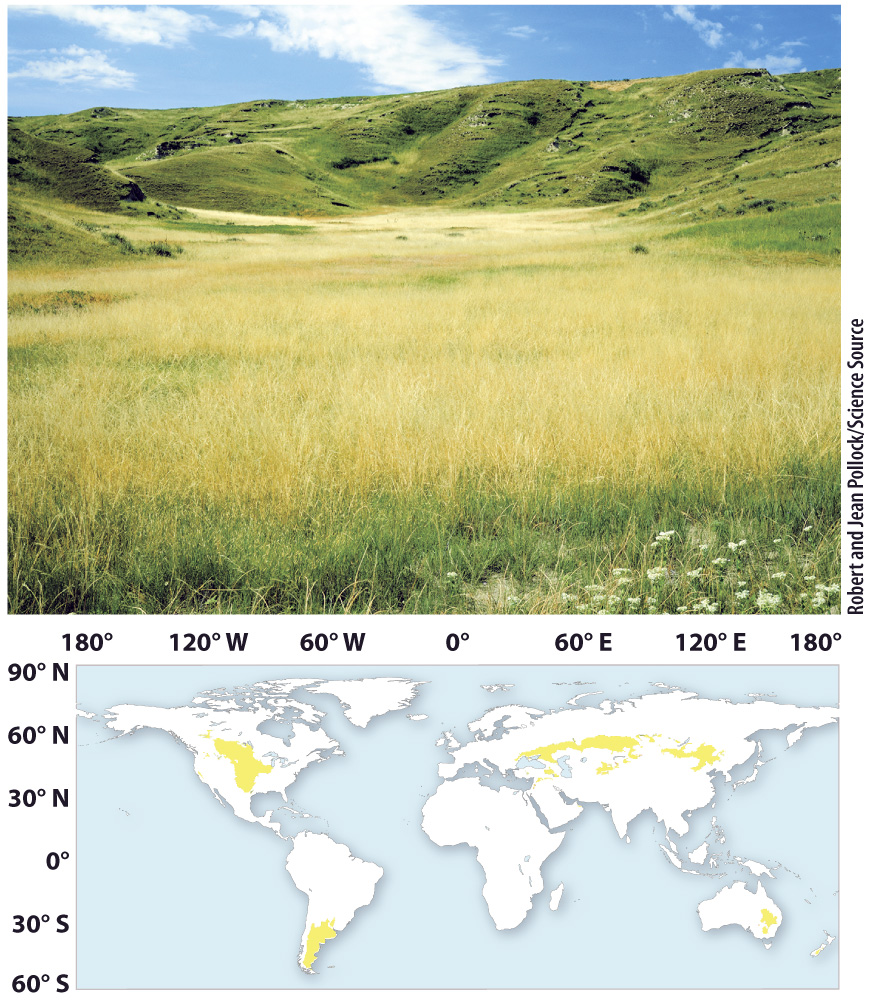
Temperate grassland
Before human settlement, this biome occupied most of the midwestern United States and south central Canada, dominated by blue- stem and buffalo grasses. Disturbance by fire helps to maintain grass populations in this biome. Lack of precipitation also prevents many species of tree from growing, and those trees that grow are usually in low areas with more available moisture. Because of active decomposers, soils accumulate nutrients, providing some of the most productive agricultural lands in the world. Before colonization by humans, temperate grasslands of North America supported abundant and diverse grazers, including bison, pronghorns, horses, and mammoths. Horses and mammoths became extinct 11,000 years ago, and herds of bison and pronghorn dwindled in the nineteenth century. Burrowing grazers such as prairie dogs remain relatively common, although population sizes have fallen; these species support predators such as ferrets, badgers, foxes, and birds of prey.
[Leave] [Close]